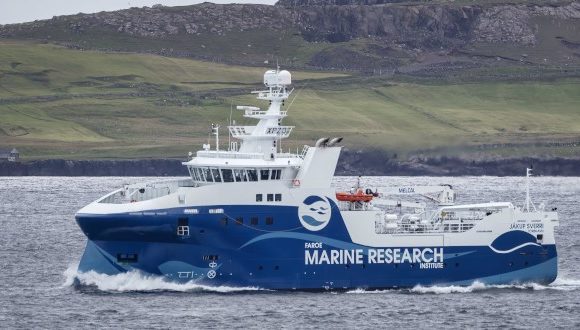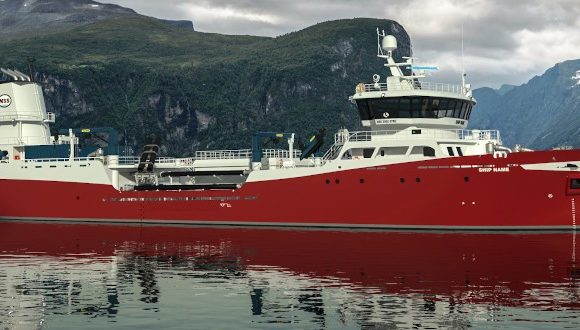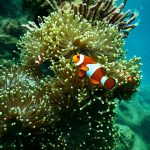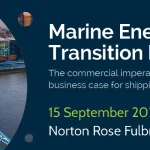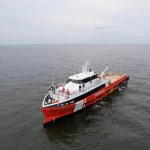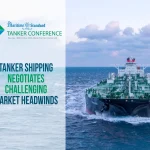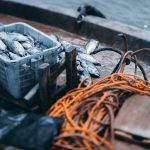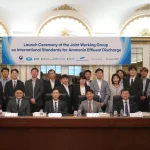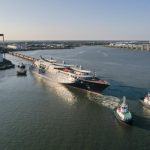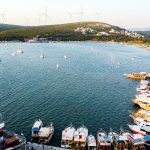Global Industry Alliance: Partnerships for Change
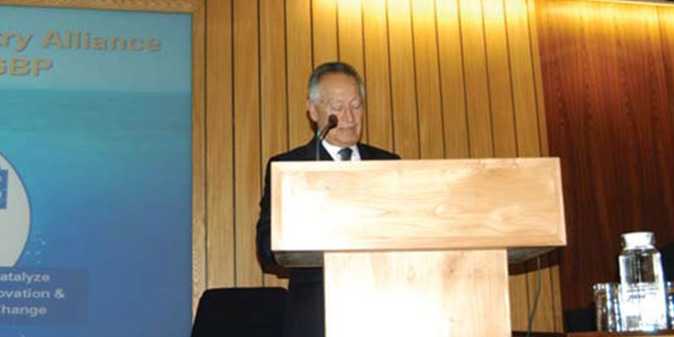
PROJECT DESCRIPTION
The overall objective of GloBallast Partnerships is to promote the development of global partnerships that will implement coordinated long-term measures to minimize the adverse impacts of aquatic invasive species transferred through ships’ ballast water in accordance with the International Convention on Ballast Water Management adopted by the International Maritime Organization (IMO) in 2004. With the help of tools developed and lessons learned from a GEFUNDP- IMO pilot project, the GloBallast Partnerships project aims to expand government and port management capacities, instigate legal, policy and institutional reforms and drive regional cooperation. The partnership effort is three-tiered, involving global, regional and country-specific partners, representing government, industry and nongovernmental organizations. Thirteen countries, from 6 high priority regions, are taking a lead partnering role, focusing on legal, policy and institutional reforms. All told, more than 70 countries in 14 regions across the globe are benefitting from the Project. GloBallast Partnerships project was launched in January 2008 and is expected to run until 2012.
A crucial part of the effort to address ballast water issues is in the area of research and development into cost-effective ballast water management solutions. Under the Ballast Water Management Convention and subsequent IMO Assembly resolutions, some ships will be required to have on-board treatment systems in place by as early as 2011, and all the ships engaged in international trade would be required to fit such systems by 2016. This means that it is essential that the current technology hurdles related to space constraints onboard ship, high flow-rate, retrofitting and compliance monitoring etc., are overcome, and effective treatment solutions have been scale-tested and installed as early as possible. Past market studies (Royal Haskoning, Netherlands) estimated that the total market for ballast treatment technologies for the next 10 to 15 years may reach US$15 billion or more as a result of the Convention requirements. This suggests that there is ample room for market forces to drive innovation, and it strongly suggests that a close partnership with industry is crucial if treatment solutions are to be achieved in the near term. Although several research and development (R&D) efforts are currently underway, one of the difficulties faced by this diverse global R&D effort is the lack of effective lines of communication between these groups and with governments and the shipping industry.
THE EXPERIENCE – Issue
Technology development represents an aspect of the ballast water issue that is ideally suited to industry involvement and leadership. Given an increasing need to facilitate technology transfer towards developing countries and ensure global sustainability through North-South collaboration, Component 4 of the GloBallast Partnerships project sets out to address the issue with financing from industry partners through the development of an innovative partnership model.
Addressing the Issue
The Global Industry Alliance (GIA) was launched in March 2009. This unique Alliance, facilitated by the GloBallast Partnerships Project and made up of a truly pioneering partnership between the IMO and major private shipping corporations, aims to harness the different skills and expertise brought by these industry groups in order to develop concrete solutions to this serious global environmental issue.
The GIA acts as a vehicle to accelerate development of innovative technological solutions and management tools to address the ballast water issue. Those solutions may include innovative treatment and monitoring technologies for ballast water management as well as alternative management options such as ‘flow thru’ ballast tanks and ‘ballast-free ships’. The GIA activities will also include the establishment of a ballast water information exchange mechanism, development of training tools targeted at maritime industry, coorganizing global conferences on technology developments, establishing an industry dialogue forum, and activities that promote technology transfer within industry.
The GIA is hosted by the IMO in London and its founding members include four major shipping corporations: APL, BP Shipping, Daewoo Shipbuilding and Marine Engineering (DSME), and Vela Marine International. Several other shipping corporations have expressed their interest to join. GIA activities are funded through a GIA Fund which is established from annual membership fees contributed by the GIA industry partners. IMO acts as the fiduciary of this Fund and the GloBallast Partnerships project coordination unit (PCU) acts as the Secretariat of GIA.
RESULTS AND LEARNING – Developing the GIA Concept
The idea of establishing the GIA was first discussed during the preparatory phase of the GloBallast Partnerships project, in 2005. Forging such a global alliance was an ambitious target, considering the complexity and technical nature of the ballast water issues. Nevertheless, the concept was soon embraced by the GIA founding partners – partners, incidentally, with whom GloBallast had already enjoyed very fruitful collaboration in the past, notably in the coproduction of the award winning TV documentary “Invaders from the Sea”.
Partnerships in Practice
The GIA, soon after its official launch on March 2nd 2009, was quick to identify a number of activities. Within six months of inception, the GIA commissioned five major activities ranging from GIA-CARES (communication and awareness raising for environmental sustainability) to the development of industry focused training packages and global R&D fora.
Launching the GIA in 2009, the Secretary- General of IMO, Mr. Efthimios Mitropoulos, said “while recognizing that time is not on our side in our fight against invasive species, we should look at this innovative alliance and its expected outcomes as a development that sends an optimistic message to the global community that, while the challenges appear to be significant, they are not insurmountable. With the effective and intelligent use of resources, and through an integrated and collaborative approach, answers to these challenges can and will be found, so that shipping and the environment can strengthen their harmonious relationship, to the benefit of all”.
Formation of the GIA has resulted in some excellent outcomes and impacts both in terms of forging a partnership to accelerate cost-effective technology solutions that are much needed by developing countries and in terms of sending a positive message to the policy makers that the shipping industry, which is responsible for the issue, is ready to act and will support government initiatives. This global level partnership will have a significant multiplier effect as similar alliances are expected to be replicated at regional and national level facilitating the dialogue between industry and policy makers at local level.
“The enthusiasm and commitment from the GIA partners has so far been great and there is tremendous goodwill out there to support GloBallast Partnerships and its objectives. The very productive GIA Task Force Meetings and efficient project selection and funding process, clearly demonstrate the trust built among all the partners and the very high spirit of cooperation.
This is truly a global environmental partnership in practice” says Mr. Miguel Palomares, Director, Marine Environment Division of IMO.
AGENTS OF CHANGE
A major factor that has played a crucial role in the success of GIA is that the partnership has a clear and very specific focus with a clear set of objectives for the partners to address. There has also been a willingness from everyone’s part to understand the nature of the problem, especially how those problems look from the point of view of those most directly affected. Most importantly all the founding partners of GIA have been directly engaged in developing solutions. Advantages of pooling expertise and resources together to overcome certain common technology hurdles were obvious to all partners. This strategic advantage, further supported by the innovative and flexible nature of GIA partnership model and the opportunity and willingness to take ownership of the partnership by all parties has tremendously helped in bringing a great sense of focus and trust. The ownership sense has been achieved by entrusting the decision-making function to a GIA Task Force comprising the industry partners and by showing that there are real business benefits from such as cooperation. As Mr. Fredrik Haag, Technical Adviser of GloBallast Project, says: “GIA aims to build a ‘partnership for change’ and to turn its members into ‘leaders and agents of change’ to address the biosecurity issues”.
SIGNIFICANCE – Looking Ahead
By forging this alliance, IMO together with GEF, UNDP and the four founding partners, has laid the foundation of what has the potential to mature into a very significant global partnership, embracing a wide community of key maritime industry players. Looking ahead, it is clear that the GIA is the start of a new chain of partnership initiatives and it is expected that this partnership will also serve as a model for future such alliances to address other issues related to the safety and security of shipping and marine environmental protection. “The scope of this achievement should not be underestimated; I rank the responsiveness of the international community to this issue as one of the world’s best examples of international cooperation on a global environmental issue, on par with how the world took decisive steps to address ozone-depleting substances through the Montreal Protocol,” said Andrew Hudson, Cluster Leader of Water Governance Programme & Principal Technical Advisor, International Waters at UNDP.


